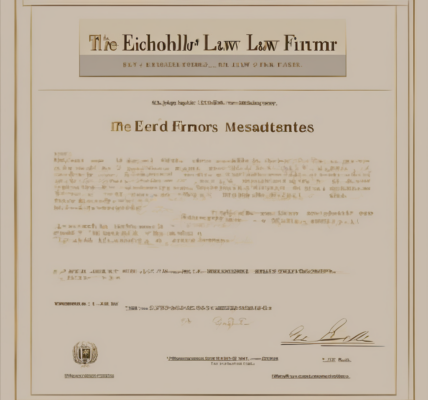Navigating the Complex World of Family Law SEO: A Comprehensive Guide for Attorneys
Family law is a sensitive and emotionally charged area of practice. Attorneys specializing in this field often face the challenge of attracting clients while maintaining a professional and empathetic online presence. Search Engine Optimization (SEO) is crucial for reaching potential clients searching for legal assistance during difficult times. This guide delves into the intricacies of SEO for family law practices, offering strategies to enhance online visibility and attract qualified leads.
Keyword Research: Understanding Client Needs
Effective SEO begins with thorough keyword research. Understanding the terms clients use when searching for family law services is paramount. This involves identifying both broad and long-tail keywords.
- Broad Keywords: These are general terms like “family lawyer,” “divorce attorney,” or “child custody lawyer.” While they attract significant search volume, competition is high.
- Long-Tail Keywords: These are more specific phrases, such as “divorce lawyer near me,” “child support modification attorney in [city name],” or “high-net-worth divorce lawyer California.” They attract less traffic individually but often convert better as they indicate a higher level of intent.
Utilize keyword research tools like SEMrush, Ahrefs, or Google Keyword Planner to identify relevant keywords with high search volume and low competition. Analyze your competitors’ keyword strategies to identify gaps and opportunities.
On-Page Optimization: Crafting Compelling Content
On-page optimization focuses on optimizing individual web pages to rank higher in search results. This involves several key elements:
- Title Tags and Meta Descriptions: Craft compelling title tags and meta descriptions that accurately reflect the page’s content and include relevant keywords. These are crucial for attracting clicks from search results.
- Header Tags (H1-H6): Use header tags to structure your content logically and incorporate keywords naturally. H1 tags are particularly important as they represent the main topic of the page.
- Content Optimization: Create high-quality, informative, and engaging content that addresses client needs and concerns. Use keywords naturally within the text, avoiding keyword stuffing. Focus on providing value to readers.
- Image Optimization: Optimize images with descriptive alt text containing relevant keywords. This improves accessibility and helps search engines understand the image content.
- URL Structure: Use clear and concise URLs that incorporate relevant keywords. Avoid lengthy or confusing URLs.
- Internal Linking: Link relevant pages within your website to improve navigation and distribute link equity. This helps search engines understand the site’s structure and content relationships.
Off-Page Optimization: Building Authority and Trust
Off-page optimization involves building your website’s authority and trust through external factors. Key strategies include:
- Local SEO: Optimize your Google My Business profile with accurate information, including your address, phone number, and operating hours. Encourage client reviews to build trust and improve local rankings.
- Link Building: Acquire high-quality backlinks from reputable websites in the legal industry. Focus on earning links naturally through content marketing and outreach, avoiding black-hat techniques.
- Online Directories: List your law firm in relevant online directories, such as Avvo, FindLaw, and Martindale-Hubbell. This improves your online visibility and credibility.
- Social Media Marketing: Engage with potential clients on social media platforms like Facebook, LinkedIn, and Instagram. Share valuable content and respond to comments and messages promptly.
- Public Relations: Seek opportunities for media coverage and press releases to enhance brand awareness and build credibility.
Content Marketing: Educating and Engaging Potential Clients
Content marketing is a powerful tool for attracting and engaging potential clients. Create high-quality content that addresses their needs and concerns. Examples include:
- Blog Posts: Write informative blog posts on various family law topics, such as divorce procedures, child custody laws, or spousal support calculations.
- Case Studies: Showcase successful cases to demonstrate your expertise and experience. Focus on the results you achieved for your clients.
- Infographics: Create visually appealing infographics to simplify complex legal information.
- Videos: Produce videos providing legal advice or addressing common client questions. This helps establish a personal connection.
- Ebooks and Guides: Create in-depth ebooks or guides on specific family law topics to offer valuable resources to potential clients.
Technical SEO: Ensuring Website Functionality
Technical SEO ensures your website functions correctly and is easily crawlable by search engines. Key aspects include:
- Website Speed: Optimize your website’s loading speed to improve user experience and search engine rankings. Use tools like Google PageSpeed Insights to identify areas for improvement.
- Mobile Friendliness: Ensure your website is responsive and displays correctly on all devices. Google prioritizes mobile-friendly websites in search results.
- Site Structure: Organize your website with a clear and logical structure that is easy for both users and search engines to navigate.
- XML Sitemap: Submit an XML sitemap to Google Search Console to help search engines discover and index all your website’s pages.
- HTTPS Security: Use HTTPS to secure your website and build trust with visitors. This is a ranking factor for Google.
Measuring Results and Adapting Your Strategy
Continuously monitor your SEO performance using analytics tools like Google Analytics and Google Search Console. Track key metrics such as:
- Organic Traffic: Monitor the amount of traffic coming from organic search results.
- Keyword Rankings: Track your website’s rankings for target keywords.
- Conversion Rates: Measure the percentage of website visitors who complete desired actions, such as filling out a contact form or scheduling a consultation.
- Bounce Rate: Analyze the percentage of visitors who leave your website after viewing only one page.
Based on your findings, adapt your SEO strategy to optimize performance. SEO is an ongoing process that requires continuous monitoring and adjustment.
Ethical Considerations in Family Law SEO
Family law SEO requires adherence to ethical guidelines. Avoid using deceptive or misleading tactics to manipulate search engine rankings. Focus on providing genuine value to potential clients and maintaining a professional online presence.
- Transparency: Be transparent about your services and pricing.
- Accuracy: Ensure all information on your website is accurate and up-to-date.
- Respect for Client Confidentiality: Never disclose confidential client information online.
- Compliance with Advertising Rules: Adhere to all applicable advertising rules and regulations.
By following these guidelines, you can develop a successful SEO strategy that attracts qualified leads and strengthens your family law practice’s online presence.




